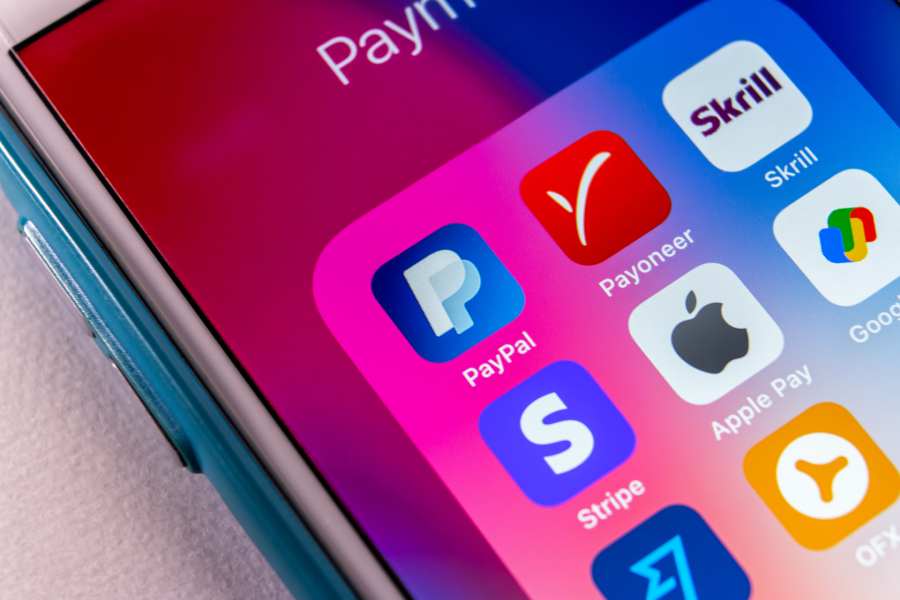
Demand forecasting is a type of predictive analytics that helps you anticipate your upcoming consumer demand so you can make better supply chain, management, inventory, and budgeting decisions. Having an accurate understanding of your upcoming demand is incredibly important in retail as it determines your inventory quantities, the types of products you should stock, and when you should be purchasing more.
This article examines different demand forecasting models, the benefits of using demand forecasting, and how to implement demand forecasts in your retail business.
Demand forecast models are mathematical techniques that look at specific data and variables to anticipate future demand. You can either use a single model or several to extrapolate unique insights about your business so that you can better anticipate demand and run your store more efficiently.
Below we explore eight demand forecasting models, detail when to use them, and offer an example of the model in action:
Qualitative forecasting is a type of demand forecasting that uses descriptive data such as expert opinions, focus groups, competitive analysis, employee input, customer testimonials, and market research rather than numerical or quantitative sources to make demand predictions.
When to use qualitative forecasting: It’s always a good idea to get qualitative input when possible. Typically, you will use it to validate quantitative findings. If you just started a retail business or are opening a specific location or launching a new product in your market, this is the easiest way to get a quick insight into what demand might be like.
In action: At my boutique, on top of looking at historical numbers and economic trends, we would also send out surveys via our Instagram page before buying trips. Here, we would get insights from our most loyal customers about color preferences and trends they liked and didn’t, information about how they’re shopping, and what they enjoy about our brand. These qualitative insights in conjunction with our numbers helped us to make better buying decisions and better understand our customers.
The Delphi Method is a type of qualitative forecasting that gathers expert opinions and insights through a series of questionnaires and uses the responses to draw conclusions and make demand predictions.
To start, retailers send out questionnaires asking experts in their industry targeted questions that will help them to better understand their future demand and industry trends as a whole.
Depending on the answers, retailers will create a summary of the responses and send it out, along with a new set of questions based on the received information. Experts can then revise their initial responses from the previous survey and answer the new questions. This process continues until the expert responses are in consensus.
The most successful examples of the Delphi Method use experts from a variety of backgrounds and allow all answers to be anonymous.
When to use the Delphi Method: This method is great if you lack internal data and are looking for expert insights. It is also ideal if you are looking for insights from people of various backgrounds and locations, as there are no bounds as to whom you can send your questions.
In action: When Bloom, a single-man flower shop, was set to open, the owner decided to use the Delphi Method to pull expert opinions from flower growers across the US. The owner needed to get a sense of when the stock was going to be available and also wanted to get insights into when these growers saw the greatest and lowest demand for flowers.
After going through several rounds of questioning, he was able to determine the seasons, specific holidays, and growing schedule of his industry and make smart demand predictions.
A trend analysis, or the trend projection method, uses your store’s historical sales and inventory data to identify demand trends. Through trend analysis, you can see cycles in demand, as well as seasonal or time-based trends that increase or decrease demand. You can then apply these findings to the future by predicting demand based on historical trends and ebbs and flows.
When to use trend analysis: Trend analysis forecasting is ideal when you have at least two years of data. You can then see multiple full-year cycles and identify where demand cycles, spikes, or trends repeat annually.
In action: For example, at my store, based on our seasonal trend analysis, we knew that there was always a spike in traffic and sales around the holidays and in the mid-summer months. We then knew to stock up on cold-weather goodies, gift options, and hot summer clothes.
Trend analysis looks at historical data in order to predict seasonal trends in demand.
Life cycle modeling is a type of retail forecasting that looks at the typical “life cycle” of a product and anticipates demand based on how frequently customers repurchase. The life cycle of each product type will be different, and what gives them their end date varies.
For example, flowers and face cream both expire; however their timelines are quite different, with flowers lasting days and creams lasting months. There is also the life cycle of something like fast fashion. While inexpensive, trendy clothing items do not technically expire, they do typically require regular replacement based on seasonal fashion trends.
When to use life cycle modeling: Life cycle modeling works for retailers that sell items that either expire, require regular maintenance or a subscription, go out of season, or need periodic replacement.
In action: For example, Small Engine Masters knows that people typically need to replace the mower blade once a year. With this knowledge, it can better anticipate how many blades to stock the store with each year.
Mower blades are a great product to run life cycle analysis on because they have a very set life span.
(Source: Small Engine Masters)
Short-term forecasting looks at only a short period of time, between three and 12 months, to make demand predictions. This forecasting strategy allows you to focus on seasonal trends and short-term fluctuations so you can better understand and plan for them.
When to use short-term forecasting: Retailers that operate seasonal businesses with predictable fluctuations in demand can use short-term forecasting. The holiday selling season is another time when short-term forecasting comes into play. You can also use this strategy if you don’t have much data to pull from.
In action: Breeze Ski Rental knows that the majority of its traffic is seasonal and comes in September through April. Thus, it knows that demand for goods will be low from May through August, so it doesn’t make sense to use data from that period to forecast demand for the winter season. Instead, it uses short-term data to look at the winter season trends so it can understand the business’s seasonal cycles and trends.
Long-term forecasting looks at trends over a period of one to four years to predict demand. Rather than looking at things granularly, long-term forecasting looks at the big picture in order to make long-term strategic decisions.
When to use long-term forecasting: Long-term forecasting is helpful in larger business planning—for instance, if you’re thinking about expanding online or to a bigger or additional storefront. Like trend analysis, it’s also helpful for identifying cycles and patterns that repeat time and time again.
In action: Returning to my own boutique experience, during the years I was there, we expanded our brand to another location and opened a “sister store.” This store sold different, slightly more refined, and higher-end pieces, and appealed to a demographic that used to shop at my boutique but had outgrown its style. We knew about this group, their buying power, and loyalty to our brand based on a long-term analysis of consumer trends and shopper profiles.
Active demand forecasting is when you use information outside of your store’s sales data to make demand predictions. Information may include market conditions for your sector of retail, economic conditions, supply chain, and other factors that have concrete numbers and stats that you can use to make demand predictions.
When to use active demand forecasting: This demand forecasting method is ideal for retailers that are starting out and don’t have their own sales data to reference. It is also great for those looking to expand their reach or enter a new industry, but lack internal stats. Many retailers, however, will consider active demand forecasting factors alongside their store’s internal sales and inventory data.
In action: About halfway through my time at my former boutique, the business that I worked for decided to open a new concept store. Whereas its first several stores, Inspyre Boutique, sold clothes aimed at young women at a sub $100 price point, the new concept, April and West, was aimed at an older audience with a bigger budget.
With no internal data on this new market, the company buyers went to work looking at economic factors, industry insights, and local data from the new store’s location. With all these active demand forecasting data points, they decided to go with a much smaller inventory than was used at the other stores and place a greater focus on jeans and accessories.
The barometric technique is a forecasting method that combines three indicators to make predictions about demand over time. These generally include leading, coincidental, and lagging indicators.
- Leading indicators: This is the event that causes demand to go up or down.
- Coincidental indicators: These are the events that are true at the same time as the leading event.
- Lagging indicators: These are events that happen after the leading event that impact future demand.
When to use the barometric technique: This is a great option for retailers that lack sales data from years past. It is also helpful for businesses that see large seasonal fluctuations, as these would be accounted for as lagging indicators.
In action: A local bakery, Pastries by Emma, has put up a stand at the farmers market near the owner’s store. Her leading indicator is that she saw a 30% increase in cupcake sales at her last trip to the market. Coincidentally, this caused Pastries by Emma to run out of lots of flavors, resulting in a 5% loss in sales to stockouts. Additionally, staff had to stay overtime, boosting operating costs by 10%.
If Pastries by Emma were to only account for these factors, they would likely make upwards of 30% more cupcakes for the next market. Emma, however, checked the radar and saw that there was going to be rain the following week, so with this lagging indicator in mind, she predicted a slight decrease in demand.
Benefits of Demand Forecasting
Demand forecasting is useful for improving your business operations and making smarter inventory decisions. You should take forecasting data into account when strategizing how to improve your customer experience, manage your inventory, and budget your cash flow and purchasing.
Want to automate your inventory management and get insights into your demand forecasting with built-in analysis and prediction features? Check out our suggestions for the best inventory management systems.
Provide a Positive Customer Experience
Good demand forecasting will ensure you have enough products in stock and adequate staff on the floor to provide a great experience for your customers.
For example, say you didn’t do demand forecasting, so you didn’t see that you have a seasonal uptick in traffic during the summer months. This leads you to not order enough merchandise or staff enough people during peak shopping season. Now, when shoppers visit and are ready to spend, many of the things they want are sold out and there are not enough people to help on the floor and run the registers.
This not only creates a lost sales opportunity and a negative customer service experience, but, for the modern shopper, it might also erode their loyalty and make them choose a competitor over your business in the future.
Improve Inventory Management
If you have an accurate picture of what your future demand will be, you will be able to anticipate what and how much your customers are going to buy. This, in turn, will improve your inventory management.
Inventory Management: The process of having the right products, in ideal quantities, at the right time to sell to customers.
The benefits of good inventory management in retail are vast. Not only will you save on storage and management costs, but you will also have happier customers, as we mentioned above, because you will always have what they want in stock. Additionally, good inventory management makes working in your shop easier, creating happier and more efficient staff. You also won’t have to run sales just to get through old stock, so you’ll improve your margins.
Are you tracking your current stock levels? If you don’t yet have a defined inventory management process, start by reading our guide on how to organize your inventory or by downloading our free Inventory Management Workbook. Once you are tracking current stock levels, it will be much easier to forecast future demand.
Better Understand Your Cash Flows
Good demand forecasting will also help you to set and stick to a budget. Demand forecasting will give you a good idea of how much revenue you can expect in the coming period as well as how much you can anticipate investing in inventory and staffing. In other words, it can help you predict your cash flow.
Knowing what your revenue is going to look like will help you determine how much you are able to spend and identify the sales goals that you need to meet in order to cover your costs and yield a profit.
Maximize Sales Potential and Avoid Excess
If you do your demand forecast right, you will have an accurate picture of what your future sales will look like in terms of how much and what types of products people buy. This, in turn, means you will have those products in stock when demand strikes – i.e., good inventory management, as we mentioned above.
Having the right supply ready to go will allow you to capitalize on demand and maximize your sales. The best demand forecasts will also ensure you don’t have excess product—only enough to meet the anticipated demand. You should never have to liquidate your merchandise or sacrifice your margins with major discounts because your supply should match demand.
How to Forecast Demand in 4 Steps
If you want to start demand forecasting for your business, use this four-step process as your guide.
1. Determine Your Objectives
The first step to forecasting demand is determining your objectives or what you are forecasting. Typically, that thing you are looking to forecast will fall into one of the following categories and will also be constrained by a set time period:
- Traffic: This looks at how many people you can expect in your store during a given period, day, or time so you can have adequate staff and inventory.
- Product: This looks at demand for a single product, typically one that has historical data either because you have carried it before or there is external data, such as for viral and trending products.
- Demand patterns: This looks at a specific period and the demand patterns that typically come at that time, so you can stock more or less products.
- Customers: This looks to predict how to appeal to customers in terms of marketing, promotional initiatives, and product selections.
Once you know the objective of your forecast, you can make better decisions about the data you should analyze and the demand forecasting models that will help you make apt predictions.
2. Collect and Analyze Your Data
The next step in the demand forecast process is to choose a forecast model and analyze data so you can create accurate predictions and make plans accordingly.
You can choose one demand forecast model or several – whatever will help you create the most complete picture and make accurate forecasts.
There are several places that you can go to find data that will help you complete your demand model and make apt predictions about your store’s future demand. Those include:
- Your point-of-sale (POS) system: A point-of-sale system is the software and hardware that allows business to complete purchases, returns, and exchanges for in-person transactions. Modern POS systems will also gather data about your store that you can use to evaluate patterns and performance. Some of the most relevant metrics to look at when doing demand forecasts include your best and worst sellers, sales by time of day and day of week, inventory turnover rates, stockout rates, and your average order value (AOV).
- Google Market Insights: If you have a Google Merchant account, you can access Google’s Market Insights where you can view trends and data from your industry.
- Social media data: Social media platforms like TikTok, Instagram, and Facebook all publish data on trending hashtags and buying habits that you can view and use to make business decisions.
- Real-life experience: Don’t forget to look to your staff and your own experience to get insights into in-store trends, customer behaviors, and other helpful information about store patterns.
Once you have gathered your data and applied the demand forecasting models most applicable to your objectives, you should have a picture of your future performance in the area you are evaluating. From there, you can then start making actionable decisions about your inventory, customers, and staffing needs.
At this stage, you should outline the ideal plans to meet your demand forecast. The next stage will be to compare those plans to your budgetary constraints.
3. Evaluate Your Budget
Once you have determined what actions you should take to meet your upcoming demand, you should assign costs and projected profits to those plans— i.e., your cash flow. Then, you should compare that to what you can afford and the risk you are willing to take.
In an ideal world, you will be able to take on all the costs of your plans and then reap the rewards of your calculated risk when your forecasts come to fruition. However, you might find that you cannot afford to take on all the costs needed to execute your ideas or that the risk is too great because you do not have the margins or your predictions are too ambitious.
Your risk analysis and budgetary limitations will be highly personal to your business. However, the biggest thing this step asks is how much faith you have in your demand forecast. At the end of the day, if you have made an accurate prediction, all the investments you make now will pay off when they become reality.
However, if you think you have made overly hopeful or risky analyses, then you are at risk of overspending on consumer demand that might never come to be.
4. Take Action
Once you have performed your risk assessment and determined what you can reasonably spend, it is time to put your plans into action.
You can use the resources below to help you get started:
- Best Wholesale Suppliers for Sourcing Products
- Retail Expansion: What You Need to Know to Grow Your Store
- Retail Marketing Strategy Ideas to Drive Sales
- Retail Mobile Marketing: Creating a Strategy to Drive In-store Sales
- How to Manufacture a Product
- How to Overcome Challenges & Recruit for Retail
- Writing a Retail Associate Job Description (+ Free Template)
Demand Forecasting Frequently Asked Questions (FAQs)
Click through the questions below to get answers to some of your most frequently asked demand forecast questions.
There are eight main demand forecasting methods, also known as models, and these include qualitative forecasting, the delphi method, trend analysis, the lifecycle model, short and long term forecasting, active forecasting, and the barometric technique.
Each method looks at specific variables and makes predictions based on those factors. To get a complete and accurate picture of your demand, you should use several models.
First, determine what you are trying to forecast—whether that be seasonal demand, a single product, a set of products, etc.—then choose a demand forecast model and analyze your data, evaluate your budget, and then place orders or take other actions to prepare for your anticipated demand.
You can determine the success of your demand forecast based on the amount of excess inventory you have, your stockouts, the adequacy of your staffing, and other indicators around the accuracy of your forecast compared to the reality of how things panned out.
Bottom Line
Good demand forecasting is based on strategy, data, and analysis, and can help you accomplish your business’ needs and goals. By understanding the types of demand forecasting strategies that are out there and utilizing them well, you can help your business cut costs, improve customer satisfaction, maximize sales, and make your inventory management more effective.





